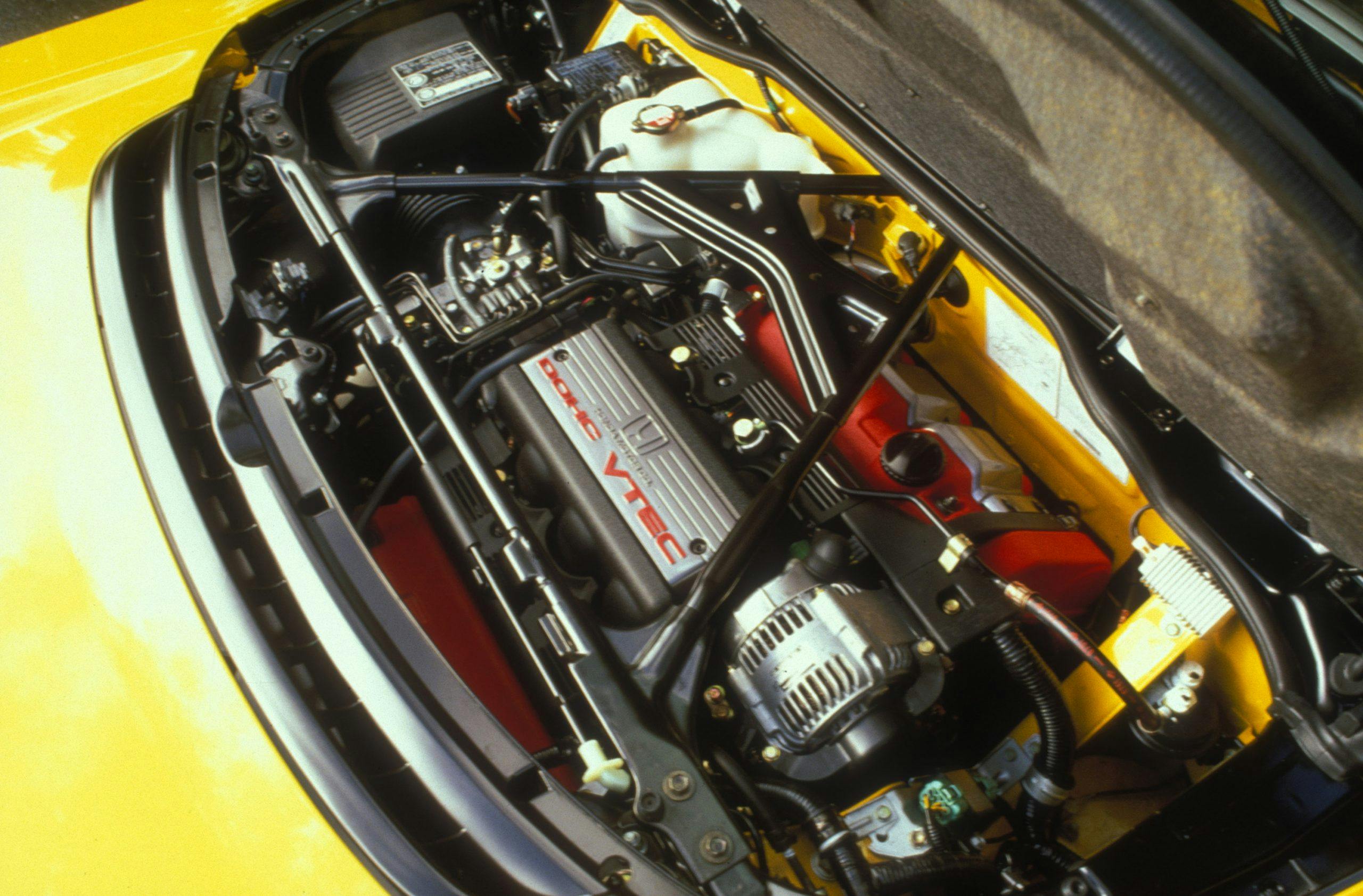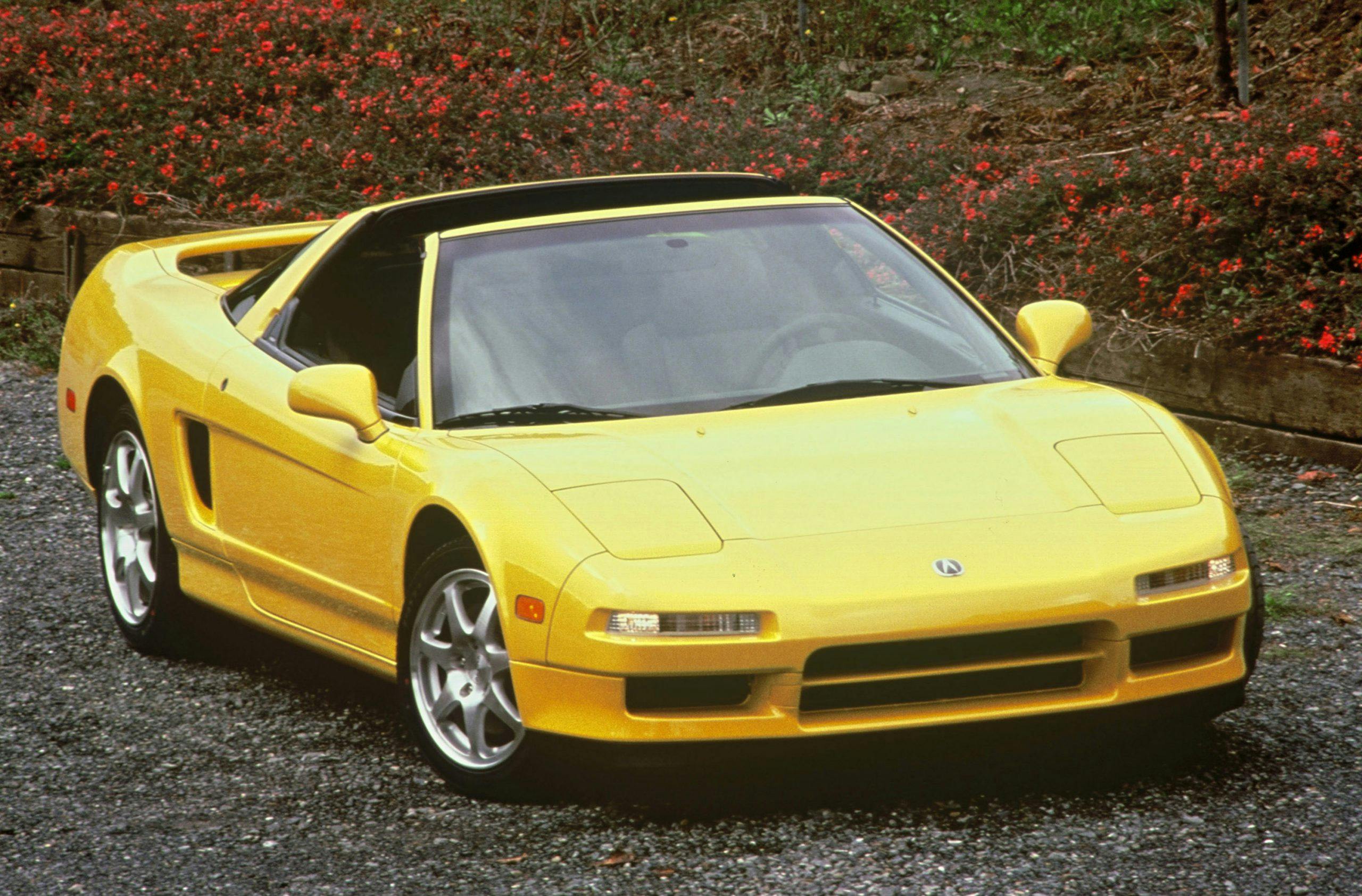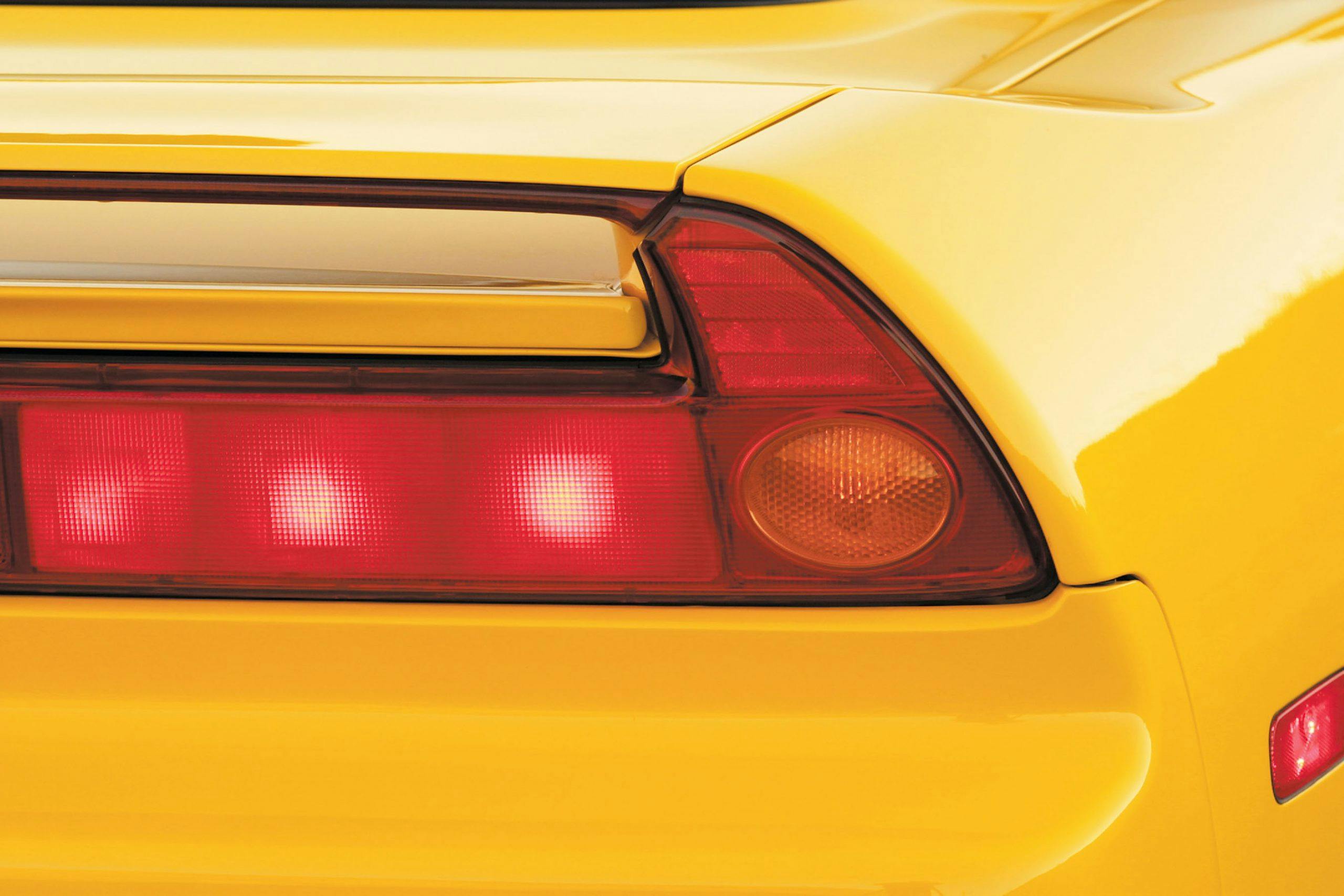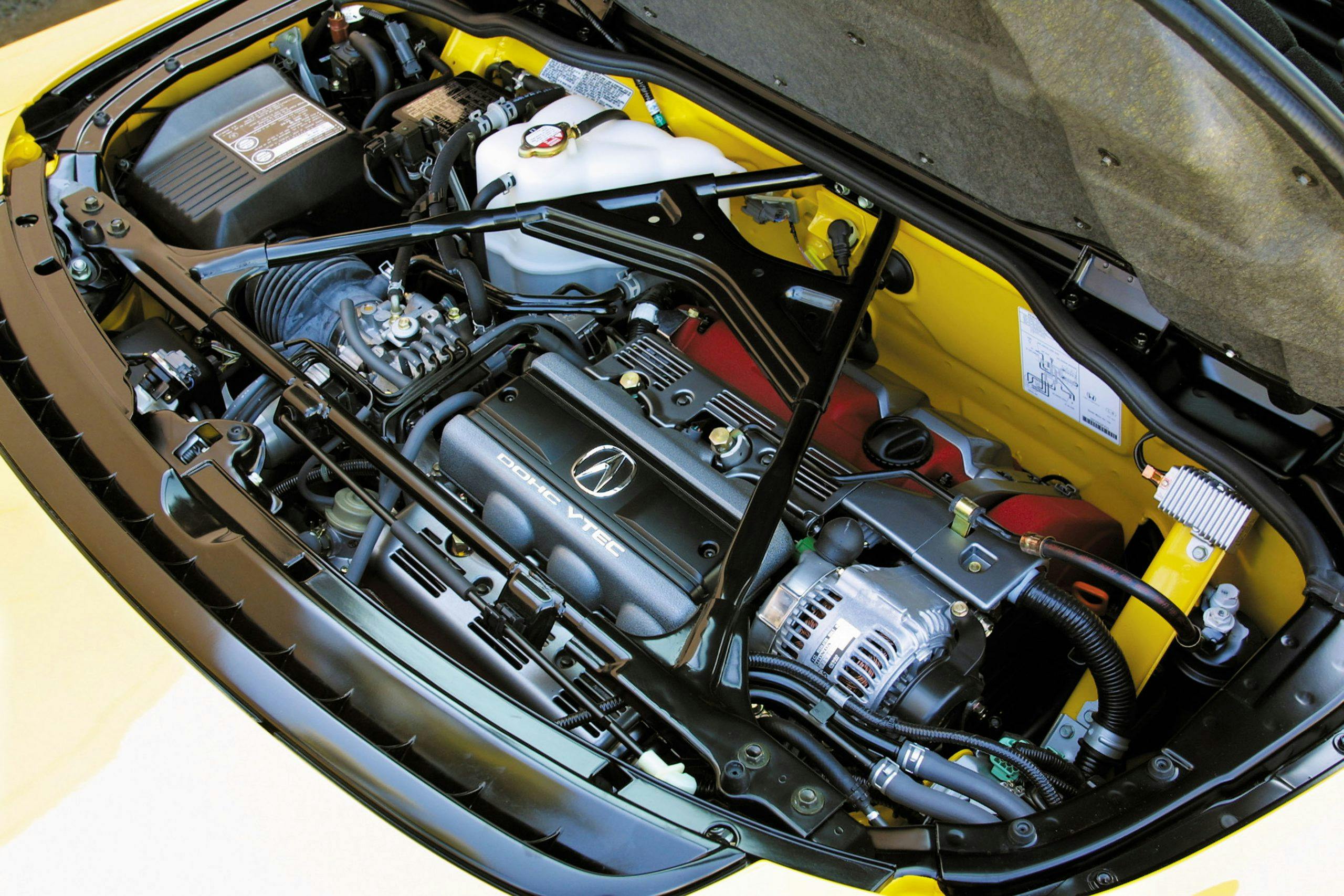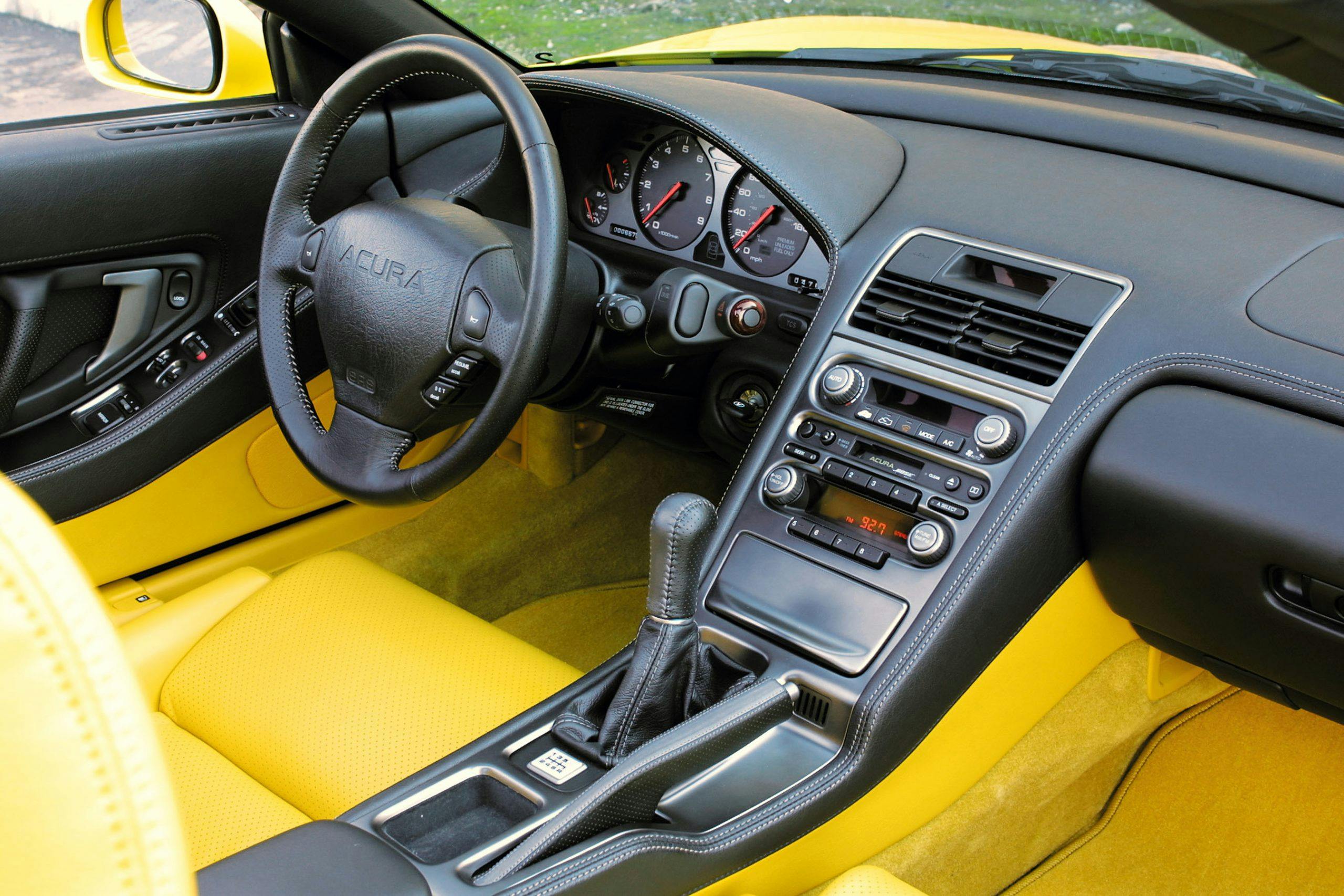Acura’s 1997–2005 NSX may have plateaued, but its future is secure
Technically, the original Acura NSX debuted back in February 1989, at the Chicago Auto Show. However, if we go by model year (1991), Honda’s game-changing flagship supercar turns 30 just in a few months, and this is a car that deserves extra celebration. The NSX famously proved that mid-engine exotics don’t have to be as difficult to live with as a pet tiger, and it was so well thought-out and thoroughly engineered that Honda didn’t have to change much over a decade-and-a-half production run. None of these virtues are lost on enthusiasts and collectors. That’s why NSXs never really became cheap, like some of their more tuner-friendly peers, and why these Acura’s values sit above those of most modern Japanese performance cars.
Much has been written about the origins of the original NSX. The designers looked to F-16 fighter jets for shaping a cockpit with good visibility, and used titanium connecting rods for first time in the industry. They even stiffened the chassis by 50 percent after Ayrton Senna, during an impromptu test, quipped that the car felt “fragile.” For some, those first and purest NSXs are best, but it’s the later, 1997–05 NSXs that command the most money on the collector car market these days. Why? The later ones are rarer, quicker, and, objectively, a little better engineered.
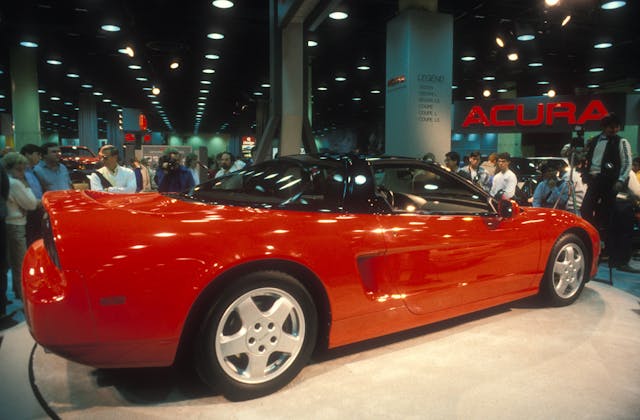
Nobody doubted in the late 1980s that Honda could build a good car, and you only had to watch about 30 seconds of an F1 race to know that Honda built a damn good engine. The Japanese also had a reputation for building mass-market performance cars. They’d been doing it for 20 years. Still, it was something else entirely for the company that sold Civics and Preludes to enter the realm of mid-engine supercars, then dominated by impractical, finicky, and hard-to-drive exotics, most of which hailed from Italy and had names with lots of vowels.
To make a daily-drivable supercar, Honda pulled out all the stops, even constructing a new, state-of-the-art factory with a hand-picked elite staff just to build the thing. Aluminum featured heavily in the NSX, starting with its ground-breaking monocoque—before Honda, no automaker had created a production car chassis entirely out of aluminum. The bodywork and many of the four-wheel double wishbone suspension’s components were aluminum as well. The engine was also aluminum alloy, and although Honda considered various configurations, including a V-8, the end product featured a 3.0-liter, 270-hp, naturally aspirated V-6 with Honda’s signature variable valve timing system—VTEC—which allowed the engine to drive smoothly and efficiently around town but breathe freely for maximum power at higher revs. Honda considered all-wheel drive as well but ditched it to save weight. And to optimize distribution of that weight, the engineers placed the fuel tank and seats in such a way that weight distribution wasn’t affected by the fuel level or the human being in the car. They didn’t simply focus on driving dynamics, either; the designers went to great lengths to provide a cockpit with good visibility and comfort, and the trunk space behind the engine isn’t that bad, especially for a mid-engine car.
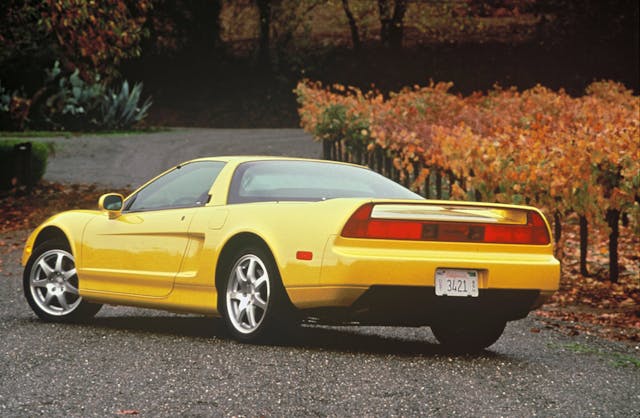
When the final version of the NSX was released it was a revelation: a supercar that was sharp, fast, and well-balanced but also comfortable, well-ventilated, easy to drive, and as reliable as an Accord. Praise was universal and effusive, but Motor Trend summed it up best, calling it “the best sports car ever built.” In fact, it was so good that Honda made only incremental changes over its fifteen-year production run.
The 1995 model year introduced an open-top version called the NSX-T (Targa) and drive-by-wire throttle, but the first of the NSX’s two major updates came in 1997. The V-6 grew to 3.2 liters, gaining 20 horsepower and 15 pound-feet of torque, for 290 hp and 224 lb-ft total. The brakes got bigger as well, and a limited-slip diff was added. Manual-equipped cars also gained a gear. Buyers who chose an auto in their NSX, meanwhile, were stuck with the 3.0-liter, 252-hp engine from the earlier auto-equipped cars.
The changes were more than enough to keep Honda’s flagship relevant. Testing the updated 1997 NSX, Motor Trend remarked that even after several years on the market “Acura’s all-aluminum, mid-engine two-seater is still a wonder, a car whose evolution keeps plausible its claim to the title of world’s best sports car.” Praising the steering, the magazine exclaimed that the steering felt “connected to the front tires as if by sinew and tendon rather than electrically assisted rack-and-pinion.”
Honda sold a few hardcore versions of the NSX in other markets, but the only serious special edition we got in this country was the 1999 Zanardi Edition, a run of 51 cars to celebrate Alex Zanardi’s back-to-back CART championships in Honda-powered cars. All of them feature New Formula Red paint, a lighter fixed roof, modified suspension, manual steering, a lighter battery, and forged BBS wheels.
The NSX’s next big updates came in 2002, including the biggest styling updates the car would ever see. Gone were the pop-up headlights (yes, there was a time when pop-ups weren’t cool) in favor of fixed xenon HID units. The hardtop coupe was gone, too, meaning the only roof you could get on an NSX in the U.S. was a removable one (Japanese buyers could still get a hardtop). There was also subtle reshaping at the nose and tail, which improved aerodynamics and bumped top speed to 175 mph, according to Acura. The exhaust tips were new as well, and the seats were revised. Under the new-ish aluminum skin, spring rates were higher, the anti-roll bar was beefier, and the rear tires grew wider.

While still a great car, the NSX was getting long in the tooth. As the price grew, and the NSX faced more and better competition, Acura’s flagship became a harder and harder sell. A 2002 Car and Driver test lamented: “We continue to love this car. But we think these modest updates on an aging (introduced in 1990), pricey exotic are similar to rearranging deck chairs on the Titanic.” By 2002 the NSX’s price had climbed to 90 grand; this was a time when you could buy a new 911 for 80 grand, a Viper for 74, and a Corvette Z06 for barely 50. The NSX wasn’t as good of a value proposition as it used to be—but, ironically, an ’02 NSX is still worth more than all those cars today.
The NSX soldiered on until 2005, and then it was gone. Even as American roads buzzed with RSX Type-S coupes and TL sedans, Acura never sold much more than 200 NSXs per year from 1999 on in the states, so the later cars aren’t just improved over the originals—they’re also rarer. Honda hemmed and hawed about the NSX’s replacement, finally releasing the latest version in 2016. More a technology showpiece than a driver’s car, the current NSX never took the world by storm the way the original did.
Once they became used exotics, NSXs depreciated, but they never became truly cheap. Compared to something like a Mk IV Toyota Supra or FD Mazda RX-7, an NSX typically went to a mature owner who didn’t slap on a fat exhaust or a body kit. NSX owners drove their cars, since an NSX is practical enough to take to work every day, but the good news is that VTEC Hondas are practically bulletproof, so neither high mileage nor scheduled service should be a red flag.
Prices for all NSXs started ticking up in 2014. Condition #2 (Excellent) values for the original 1991–96 cars are up an average of 14 percent over the past three years and 58 percent over the past five years, but the 1997–05 cars have shot up even more aggressively, with #2 values up 18 percent over the past three years and 69 percent over the past five. Even over just the past 12 months they’re up 13–31 percent, depending on the year. They’ve stayed flat since May 2020, however, suggesting that these NSXs may be fully priced for now.
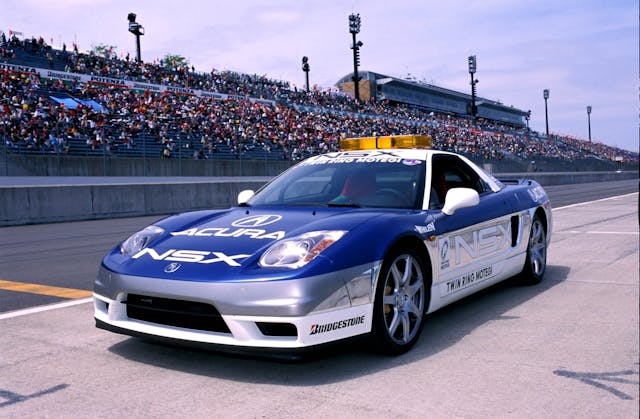
Current values for 1991–96 NSXs range from $33,800 for a ’91 example in #4 (Fair) condition to $120,000 for a best-in-the-world condition #1 (Concours) car. The 1997–05 cars, meanwhile, range from $40,900 for a ’97 targa in #4 condition to $165,000 for a final-year, ’05 car in #1 condition. Naturally, the automatic-equipped 3.0-liter NSXs command significantly less, and coupes sell for more than targas. 2002-and-later cars also command a few grand more than earlier ones, though this is probably more due to their rarity and improved handling than the xenon headlights. Zanardi Edition NSXs are the holy grail, but they rarely pop up. One sold for $282,017 on Bring a Trailer in September, shattering the record set by a $140,000 car back in April.
Value growth does seem to have slowed, but the NSX’s long-term collectability is a sure thing. They are some of the most well-respected cars of their time, and their precise, modern engineering and analog, driver-focused experience is a winning combination. That pairing is getting scarcer among new cars, too, and the influx of numb, computer-laden offerings will only increase the appeal of the NSX.


